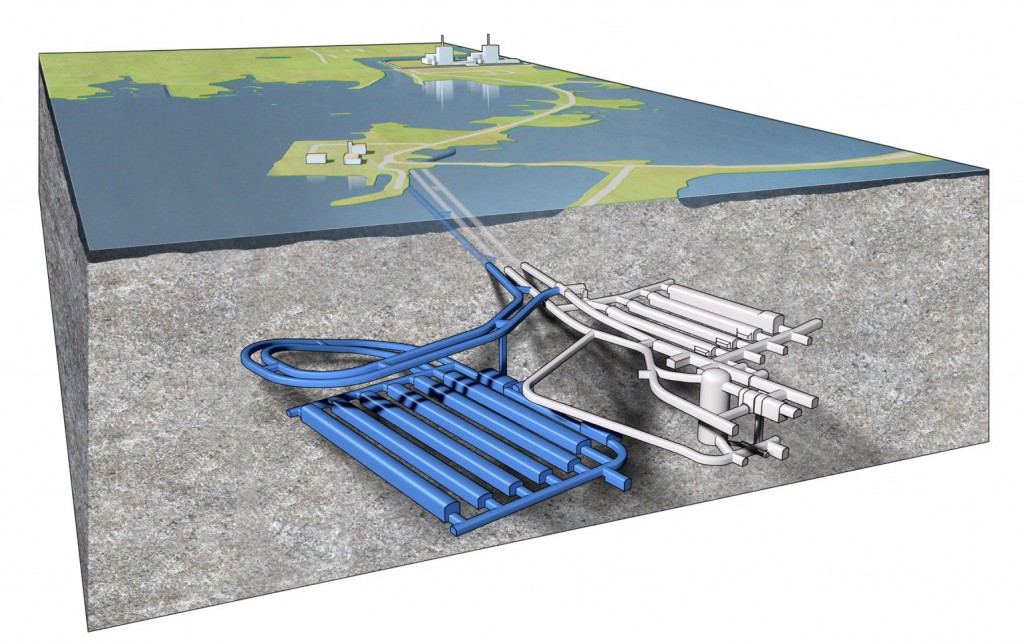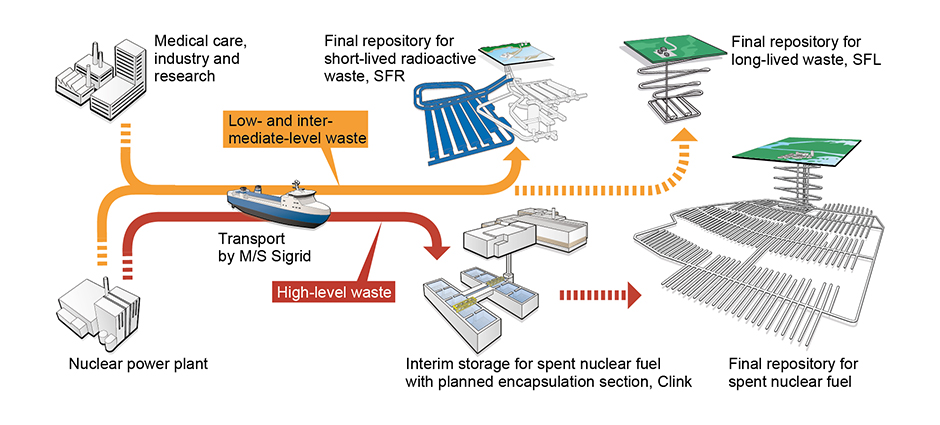First of SKB’s major construction projects gets underway – first blasting salvo planned for autumn 2024
In around one and a half years from now, SKB plans to fire the first blasting salvo in the work to extend the Final Repository for Short-lived Radioactive Waste (SFR) in Forsmark. The repository will be made almost three times larger, so that it can receive decommissioning waste from Swedish nuclear power plants. But there’s a lot to be done before then. The extension project will take about six years to complete.
In 1982, SKB submitted its application to build a final repository for short-lived radioactive waste in Forsmark. The application had been preceded by geological investigations in Forsmark and on the Simpevarp Peninsula, near Oskarshamn. When the rock was compared at both sites, it turned out that the rock was better in Forsmark. A permit to build the facility was obtained one year later, in 1983, and the waste vaults were put into operation in 1988. A few years later, in 1991, the silo for intermediate-level waste was also put into operation.
The SFR was built to accommodate 63,000 cubic metres. There were also plans for a second stage that would hold up to 90,000 cubic metres. The second stage never needed to be built, as near-surface repositories were built at the nuclear power plants. The power companies also improved their volume optimisation of waste.
Deeper than existing facility
Initially, the intention was for the SFR to be closed in 2010, in accordance with political plans at the time. As we all know, this did not happen, and it will soon be time to extend the SFR, with new storage vaults at a depth of 120–140 metres. This is deeper than the existing facility, which is about 50 metres below ground level.
– We’re now going to extend the SFR to make room for 180,000 cubic metres of low-level and intermediate-level waste, instead of today’s 63,000 cubic metres. This is needed so that we can receive decommissioning waste from our owners, explains Jerry Westerstedt, programme manager for the SFR extension.

Jerry Westerstedt is programme manager for the SFR extension, which will more than double the capacity of the SFR.
Excavation and installation work
The extension of the SFR will take around six years: three years of excavation works and three years of installation works, which will include putting ventilation, lighting and handling equipment in place.
At present, a lot of administrative work is underway ahead of the upcoming contract procurement, although some preparatory work is also being undertaken at ground level and on site, down in the rock.
Just in time for Christmas last year, SKB obtained an environmental permit from the Land and Environmental Court for the extension of the SFR. The permit regulates issues such as noise and transportation.
– Before we exercise the permit, we’ll be developing new inspection programmes that show how the conditions in the permit are being followed up and checked. We expect this to happen after the summer, when we’ll also be establishing a contracting area.
Turnkey contract in collaboration
In January, SKB issued a tender dossier in order to procure a collaboration partner, and work to find a collaboration partner will continue until the summer. Subcontractors will then be procured, including contractors for rockworks, electrical works and plumbing, heating and sanitation.
– Extending the SFR is a project that’s both unique and complex, as it involves the extension of an existing nuclear facility, in which the different elements will have to be adapted to each other. We know radiation safety, and our prospective collaboration partner must know construction. This is a multi-billion-kronor contract, on a scale similar to what it cost to build Friends Arena, Sweden’s national arena, in Solna, says Jerry.

The SFR with the existing section in white and the planned extension in blue.
There are also busy times ahead for permit applications, as a permit from the Land and Environmental Court on its own is not sufficient. In late March, the programme must also submit a preliminary safety report to the Swedish Radiation Safety Authority (SSM).
– The preliminary safety report describes how radiation safety will be organised in the future. It deals with both the design of the repository and how the organisation will be structured, as well as how radiation safety is to be maintained at the facility during operation and post-closure in the future. The first safety report was submitted along with the application back in 2014, and it must now be supplemented by us and approved by SSM before construction can start.
Rock equivalent to Avicii Arena to be blasted
Before the first blasting salvo is fired, which is planned for the end of 2024, additional preparatory work must also be carried out, including filling in a bay, where SKB will temporarily store excavated rock.
– Once the extension is up and running, in theory there will be a truck with blasted rock coming out of the tunnel every ten minutes, around the clock. There’s a lot of rock to be blasted – the total volume of the caverns we will create is about 650,000 cubic metres. This corresponds to the volume of just over one Globen, or Avicii Arena, as the building in Stockholm is now called, Jerry concludes.
More about SKB
Read more about SKB’s assignments and projects at www.skb.com.
Last review: April 5, 2023
Last review: April 5, 2023
